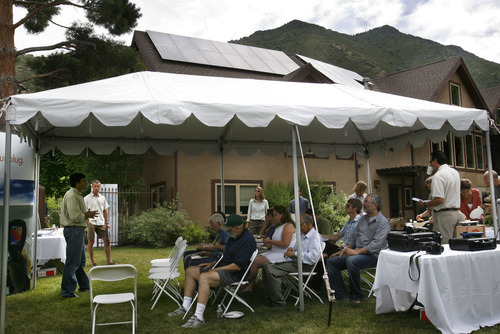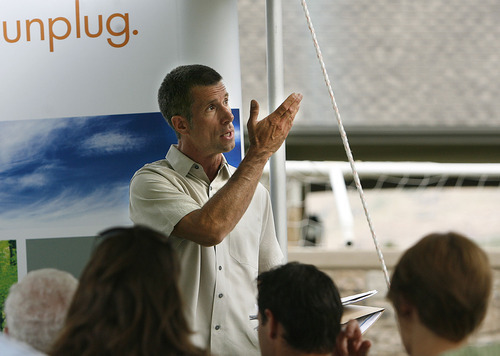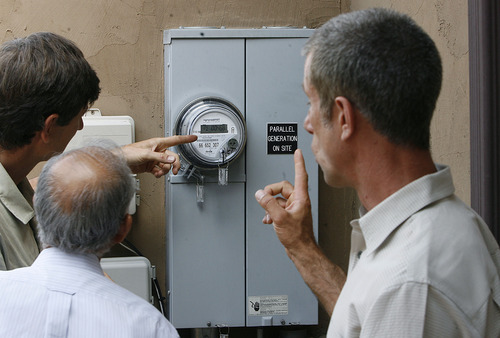This is an archived article that was published on sltrib.com in 2011, and information in the article may be outdated. It is provided only for personal research purposes and may not be reprinted.
Five years ago when Bob Frey and his family moved into a bigger home in the Olympus Cove area, he looked into buying a solar power system in order to reduce the use of carbon-based energy and do his part to ease the area's chronic air pollution.
Back then, the return on his investment in such a system didn't look right, the technology wasn't quite there and he wasn't satisfied with the answers from a contractor about the amount of new wiring it would require, where it would go and how it would look.
Five years later, with solar panels on his roof providing about 40 percent of the electricity for the 5,000-square-foot home, Frey says the sun has risen on the economic and environmental gains of solar power.
"The economic argument is compelling," he said. "But to me the social aspect of it is the more compelling."
Frey on Saturday showed off the system at an open house meant to encourage other homeowners to look into solar energy and improve energy efficiency.
The technology is better, and homeowners can actually earn a return on their investment, he said. But it's also something homeowners can do to lessen air pollution, the one big issue the 15-year resident has with living in the Salt Lake Valley.
"Utah's a great place to live … except with the air-quality issue," he said. "When you talk to people, it's 'Look, if I ever left, it's because of the inversion or the air.' "
Beyond those socially conscious reasons, the project does pencil out, Frey said.
To get a start on it, he hired the Park City company DwellTek to do an extensive energy audit of his home.
Jason Dittmer, a DwellTek co-owner, said his company starts out not to sell solar systems, but to set the customer on the path to a more energy-efficient home.
In the case of Frey, a DwellTek audit showed that the house was losing 50 percent of its heated or cooled air per hour.
"At the office we say, plugging in solar is like giving yourself blood," said Dittmer. "But if you're bleeding, it's kind of important to stop the bleeding before you give yourself blood."
The firm plugged the leaks with new windows in some cases and caulk in others. It also installed new furnaces with up to 98 percent energy efficiency to replace some that were one to two decades old. Then it put solar panels on the roof.
There are no exposed wires, and the installation was smooth and quick, said Frey.
Frey said the solar power system cost $26,000. But with state and federal tax credits and a grant from Rocky Mountain Power, his final bill was $13,000. In addition, Rocky Mountain Power buys the electricity the house is not using at the retail rate. The system is projected to reduce power bills by $750 a year.
"So you spent 13 grand, you're getting $750 back, that's like you're getting 6 percent interest on money sitting in the bank," said Frey. "To me, the economics are, if you've got money in the bank making 2 to 3 percent, why not put the money on your roof and get 6 percent?"
As power rates rise over the years, the rate of return will be even greater, he said.
But it's not just a projection of savings. The DwellTek system included an Internet-based software application that allows the homeowner (and the company if the owner chooses) to monitor solar energy production day in and day out. You can actually measure the costs and savings and see how each panel is performing.
DwellTek officials said Frey's was not a normal project. The company says solar systems are not recommended for many homes, but lesser energy conservation measures such as insulation and sealing a home have a much higher rate of return than solar power.
twitter @tomharveysltribv









